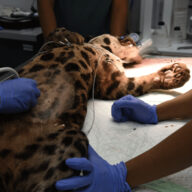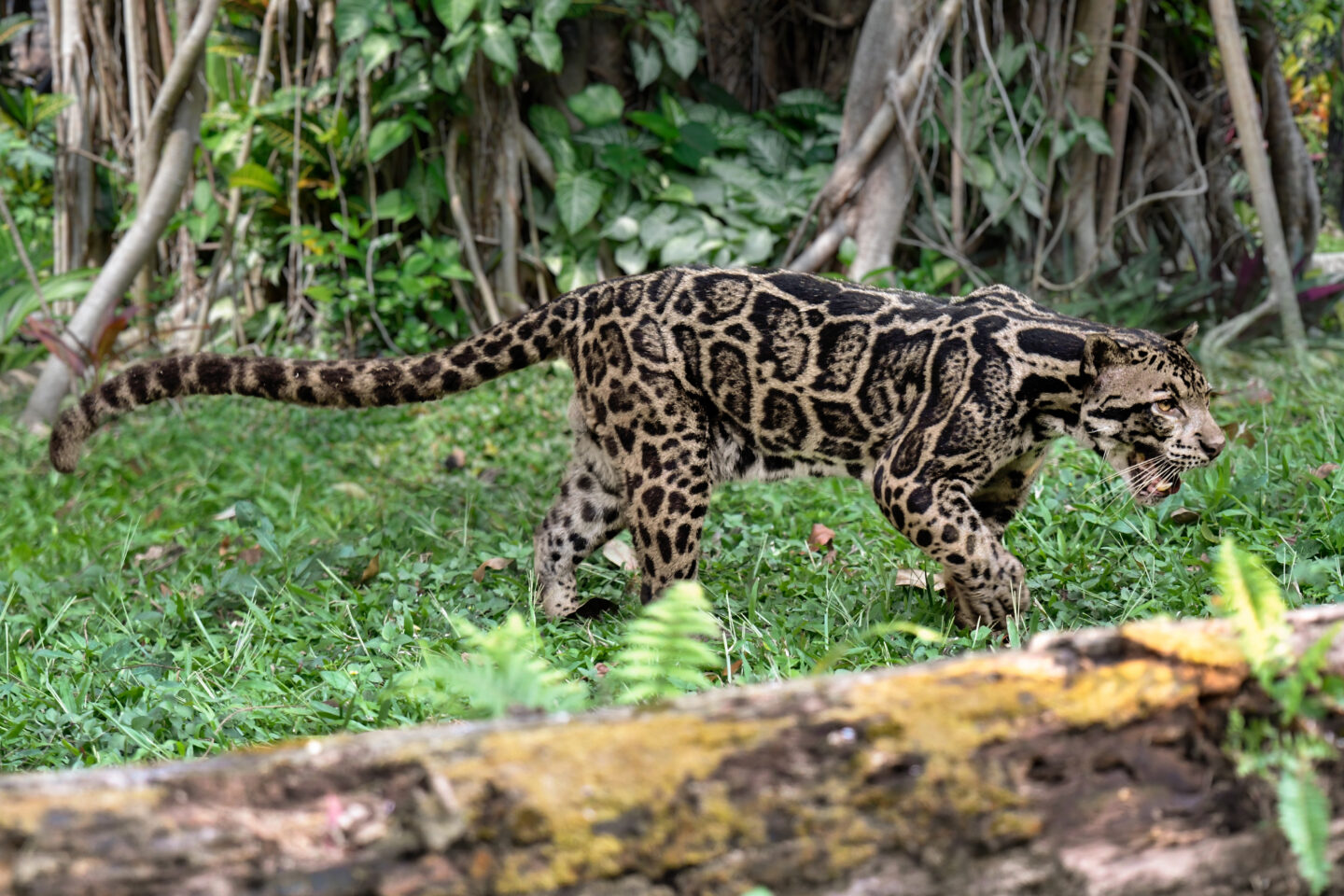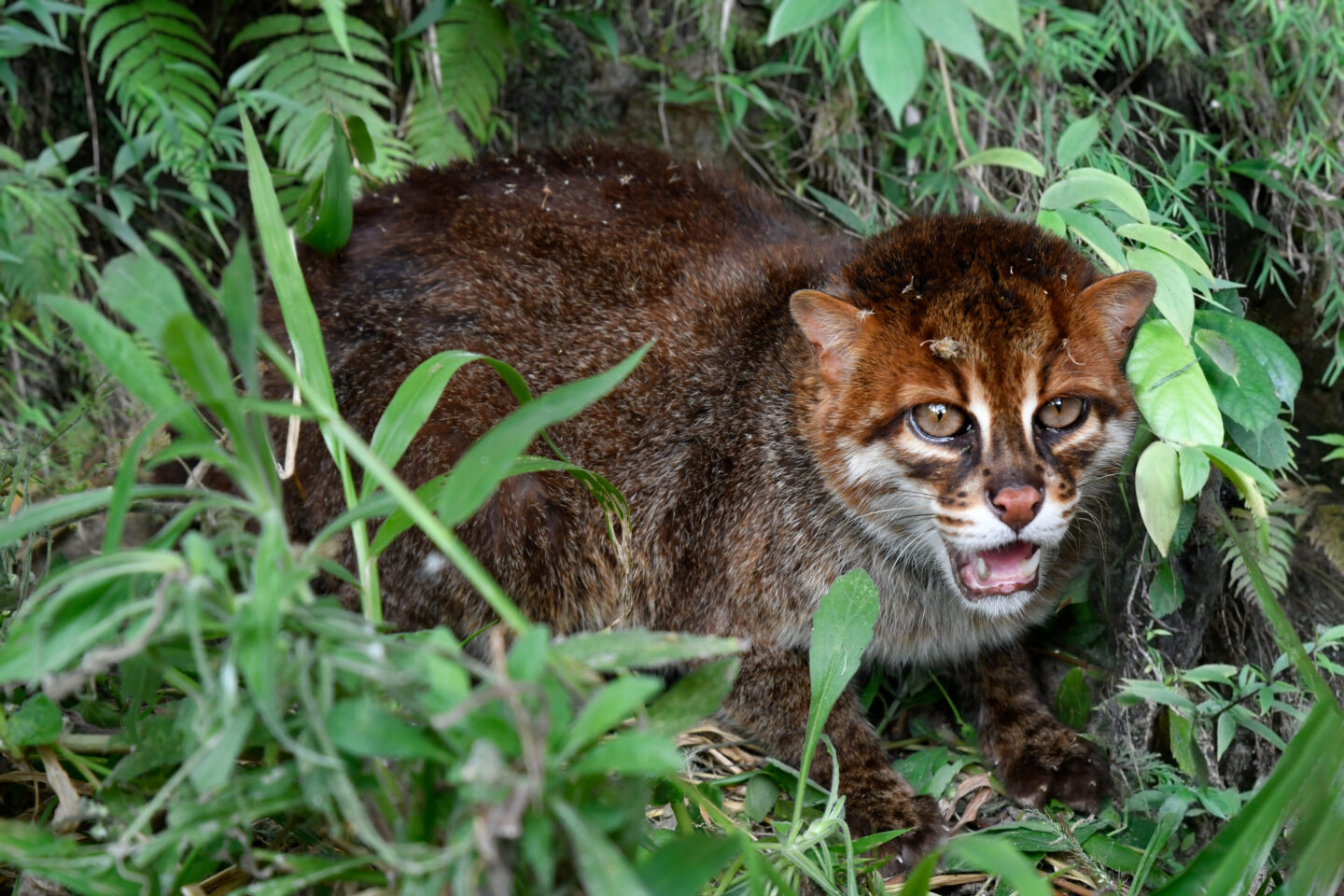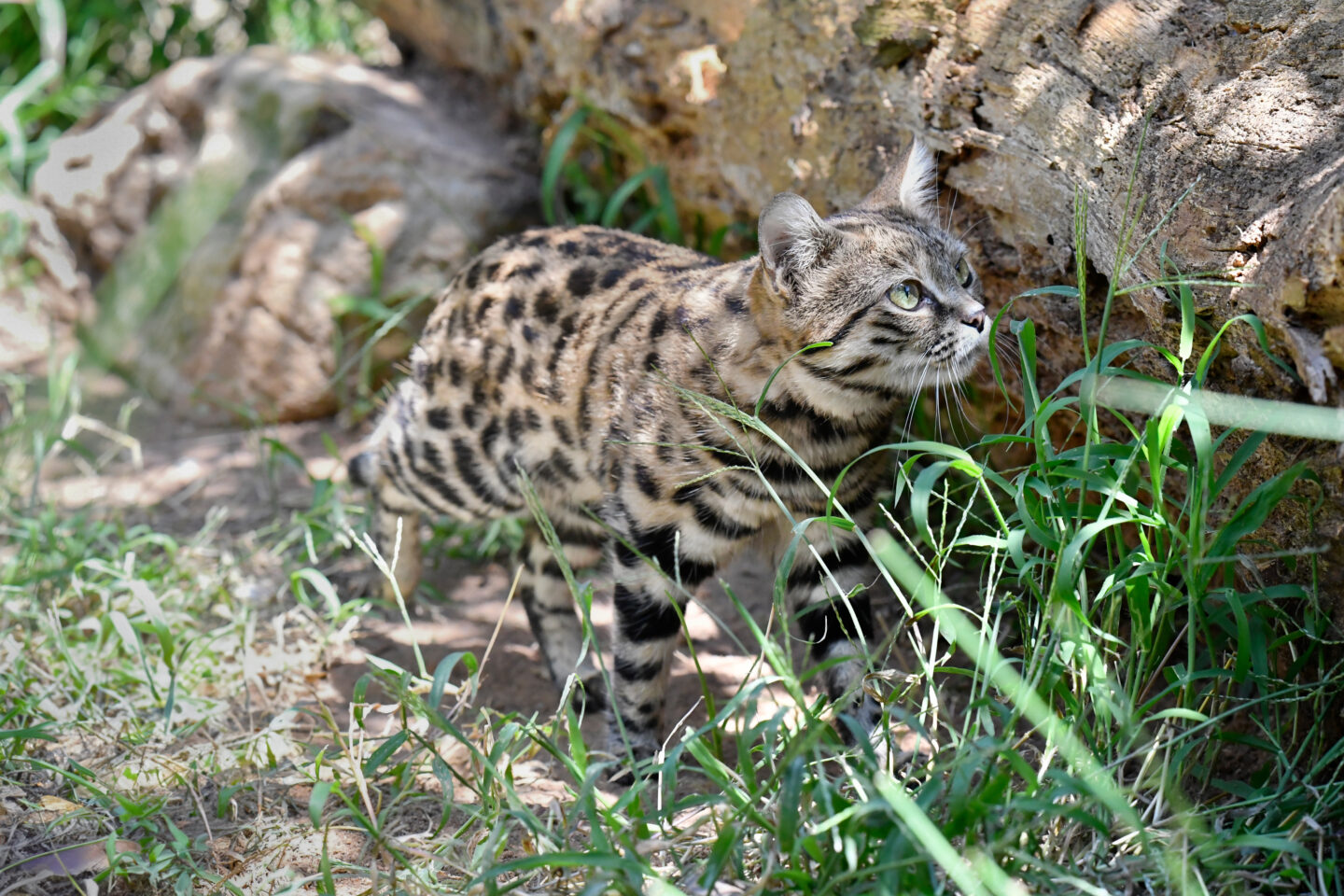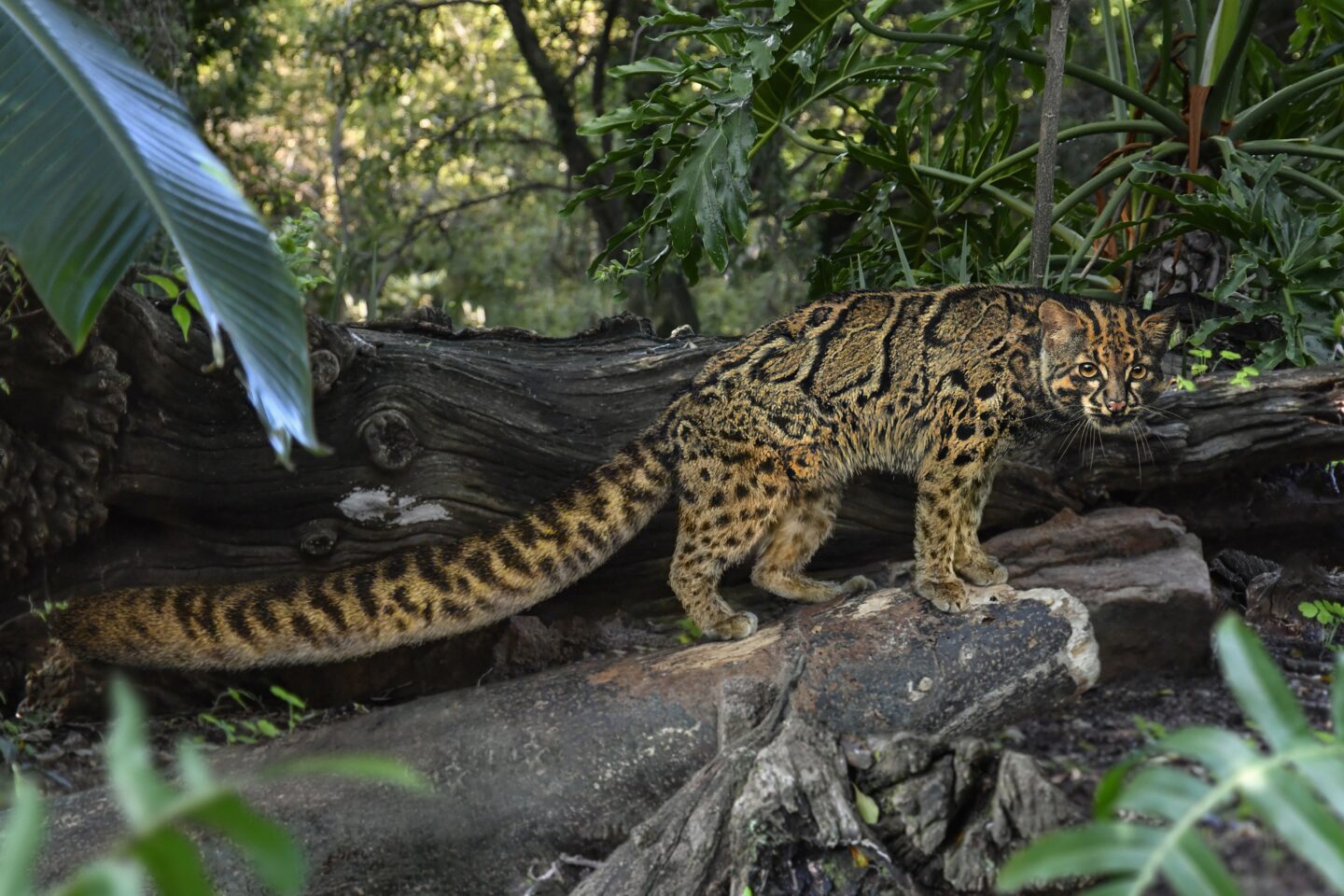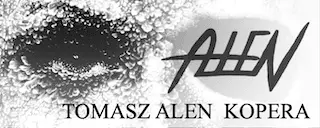About Us
The Save Wild Cats Foundation was established in 2019 to rescue the most endangered species of wild cats. 90% of the funds raised to aid wild cats are allocated to campaigns concerning large cats. Our efforts focus on lesser-known species that are often overlooked by other organizations – including the smallest members of the cat family.
By securing genetic material and improving assisted reproduction methods, we aim to ensure the continuity of these species. Let’s not allow the Iriomote cat, black-footed cat, African golden cat, or Bornean bay cat to disappear from the face of the Earth.
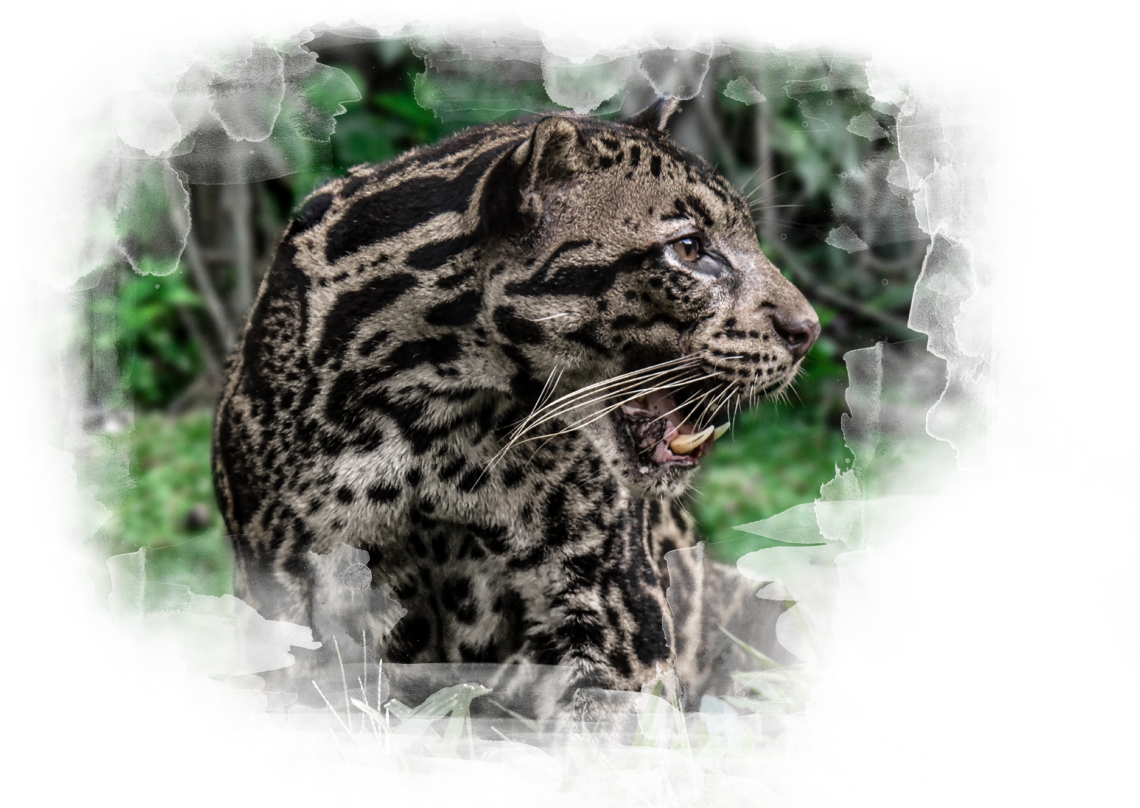

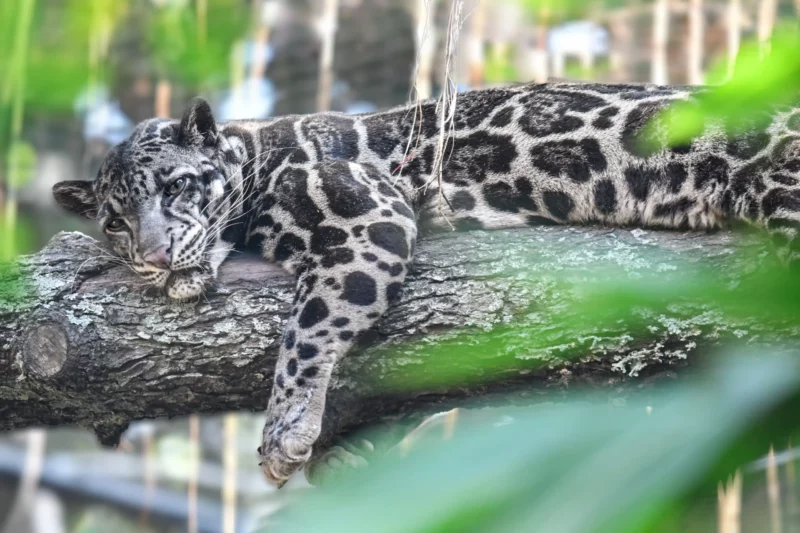
Sunda clouded leopard
The Sunda clouded leopard has a finer pattern on its fur and more gray fur than the clouded leopard. Its gray fur has cloud-like patterns that are darker than the background. This particular fur pattern and the region in which it occurs (Sundaland or Sunda Region refers to the islands of Sumatra, Borneo, Java, Bali, and the Malay Peninsula) give the name Sunda Nebelleopard.
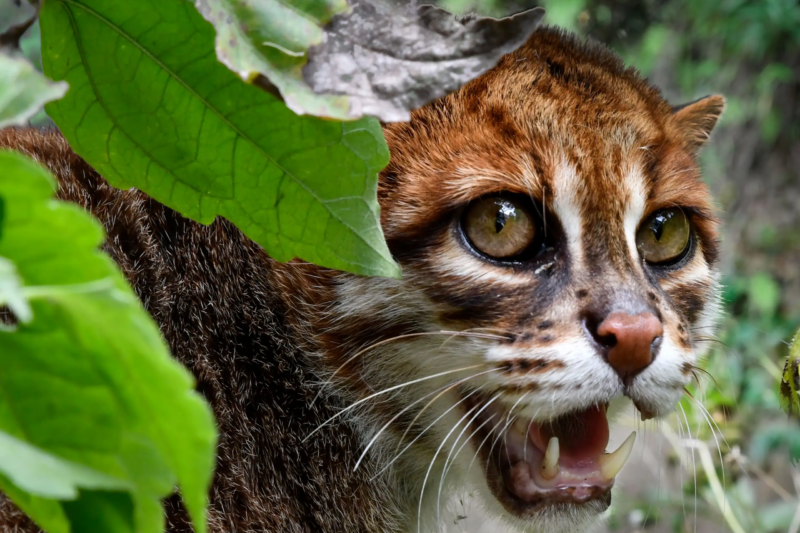
The flat-headed cat
The flat-headed cat is characterized by an elongated head and flattened forehead. Its ears are small, rounded, and well-set on the sides of the head. It has noticeably large, closely set eyes. The cat’s claws do not touch the ground when it walks but are always slightly extended from their sheaths. Its paws are long and narrow, with a well-developed Interdigital membrane between the toes.


Without your help these species will not survive
Click on the icon to learn more about the selected species
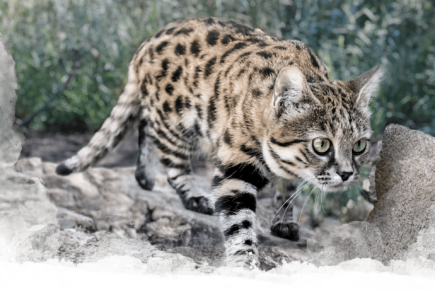
Felis nigripes
Black-footed cat
The black-footed cat is one of the smallest cat species in the world and the smallest in Africa. The Black-footed Cat gets its name from its black pads and the underside of its paws. Its fur is fawn-colored and marked with black and brown spots, merging into broad neck, legs, and tail stripes.
Find out more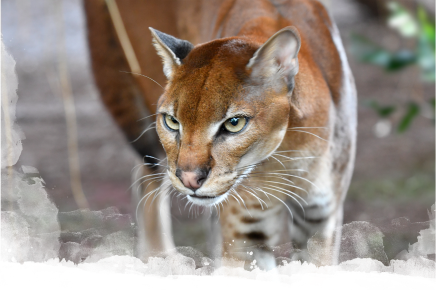
Caracal aurata
African golden cat
The African golden cat is a medium-sized cat with a compact body and relatively short legs. Its head is small to its body, and its ears are rounded. The fur can be reddish brown or grayish, spotted or smooth. The throat, chest, and underside of the body are white, and there are usually large dark spots on the belly.
Find out more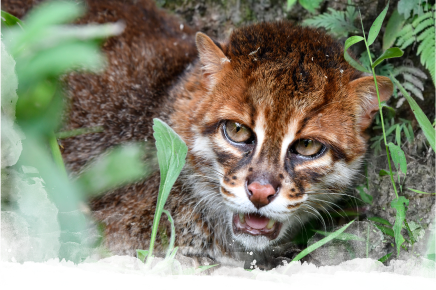
Prionailurus planiceps
The flat-headed cat
The flat-headed cat is characterized by an elongated head and flattened forehead. Its ears are small, rounded, and well-set on the sides of the head. It has noticeably large, closely set eyes. The cat's claws do not touch the ground when it walks but are always slightly extended from their sheaths. Its paws are long and narrow, with a well-developed Interdigital membrane between the toes.
Find out more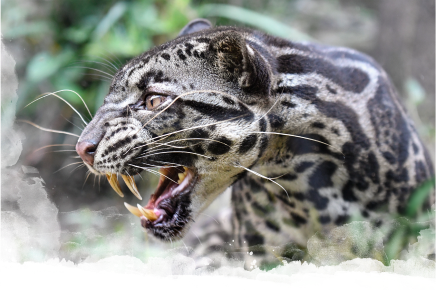
Neofelis diardi
Sunda clouded leopard
The Sunda clouded leopard has a finer pattern on its fur and more gray fur than the clouded leopard. Its gray fur has cloud-like patterns that are darker than the background. This particular fur pattern and the region in which it occurs (Sundaland or Sunda Region refers to the islands of Sumatra, Borneo, Java, Bali, and the Malay Peninsula) give the name Sunda Nebelleopard.
Find out more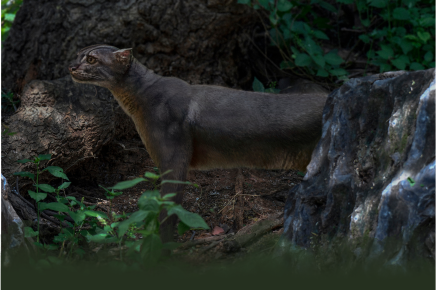
Catopuma badia
The bay cat
The coat of the Bornean Mormi is usually chestnut in color, but individuals with a gray tint have also been known. The bay cat has a long tail about 73% of its body length, a rounded head and small, rounded ears.
Find out more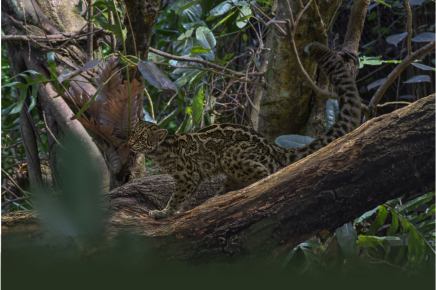
Pardofelis marmorata
Marbled leopard
Primary color is brownish-gray to reddish-brown. The sides and back of the body are covered with large, irregular brown to reddish spots surrounded by a black border. The large spots progress to small dark spots on the limbs, tail and neck.
Find out moreFoundation partners
The Foundation works with numerous partners to effectively achieve its goals and mission.
